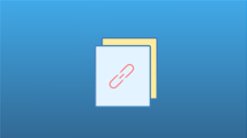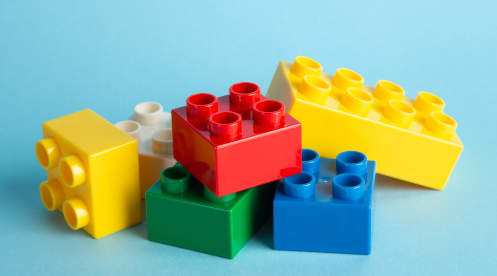Product Design: Rapid Prototyping
What kinds of prototypes can be made, and what is rapid prototyping? This video and transcript provide an overview of types of prototypes and the rapid prototyping process.
Resource Title:
Product Design: Rapid Prototyping
Description:
What kinds of prototypes can be made, and what is rapid prototyping? This video and transcript provide an overview of types of prototypes and the rapid prototyping process.
Target Grade Level:
Grades 9-12
Discipline or Course (Audience):
CTE: Advanced Manufacturing Systems (VA Course - 8427)
Time Frame:
One 20-minute session
Suggested Grouping:
Individual
Key Vocabulary:
prototype, design proposal, model, conceptual model, sketch, diagram, iteration, orthographic projection, isometric projection, auxiliary view, oblique drawing, sectional view, perspective drawing, mathematical model, simulation, proof-of-concept, visual prototype, working prototype, pre-production prototype, rapid prototyping, scale model, additive layer manufacturing, caliper
Educator Prep:
This video helps students to understand the intricacies of the prototyping process. It is important that they see prototyping as an iterative process where they refine their product and not the culmination of their design activities.
Recommended Student Background Knowledge and Skills:
- Examples in this video are derived from designs students created in Activity - Biomimicry and Prosthetics: Engineering Design Process .
Remote Learning Adaptations:
This resource is appropriate for remote learning; no adaptations or modifications are necessary.
STUDENT CONTENT BELOW THIS LINE
Watch this video to learn more about the prototyping process.
“To take on the jobs of tomorrow, students must become more than good test-takers. They need to become makers who design, sketch, build, and prototype. And their classrooms will need more than a chalkboard and a set of textbooks.” — Charles Best, philanthropist and entrepreneur
Creating a prototype is an essential — and exciting — part of the engineering design process. After all of the work that’s been completed during the earlier phases of identifying the problem, empathizing with the consumer, conducting research, narrowing down your design, and creating a design proposal, you now get to see the results of your efforts.
So what exactly is a prototype?
In the context of manufacturing, a prototype is a model of a product you plan to manufacture. There are many different types of prototypes. Let’s take a closer look at some you’ll likely encounter as you prepare for a CPT or design certification.
A prototype is simply a model that shows some representation of the product. It can show what it looks like, it can show how it functions, or it can do all of these.
What are some common types of models?
Conceptual Models: The most basic prototypes are ones that you’ve already created: conceptual models. These are often found in the form of sketches and diagrams. While they may not be fully-functioning representations of the product, conceptual models represent the first iteration of the product, showing both what the product looks like and how it will function. These can be two-dimensional sketches or three-dimensional orthographic projections such as isometric projections. Other types of drawings you may encounter in manufacturing are auxiliary views, oblique drawings, sectional views, and perspective drawings.
Mathematical Models: In design work at NASA, you may encounter mathematical models! These types of models use mathematics and equations to show how a system or product would function.
Video Simulations: Another visual representation of your product is a video. You can use CAD software to create an animation or simulation of a 3D rendering of your product. These allow others to see the product from all sides. Many of these modules can also leverage virtual reality (VR) technology.
Physical Models: But when you think of prototypes, you’re likely envisioning a [v]physical model[\v]. These are models of the product that you can hold and may have some of the functions detailed in the product design.
- Proof-of-Concept: This is often your first functional model prototype. It demonstrates that the product can meet essential criteria, but this prototype may not appear anything like what you designed the final product to look like. Using our prosthesis example, your proof-of-concept might simply be two metal rods connected with a hinge to represent a joint in a limb. There is no outer casing and it may not resemble a prosthetic limb.
- Visual Prototype: This prototype shows what the product would look like but may not include any functional parts. Using our prosthesis example, it may look like a leg with a knee and foot, but it may not bend at the joints or have the ability to point or flex.
- Working Prototype: This is the next step in the prototyping process, also known as a functional prototype. This shows a fully functional prototype that functions as the final product will, but it may not have all of the features or appearance of the final product. Using our prosthesis example, it will have all of the moving parts of the prosthesis, but it may not have the final appearance of the prosthesis.
- Pre-Production Prototype: Also known as a “factory sample”, this prototype is fully functional, and a visual representation of what the manufactured product will look like. Using our prosthesis example, this would be a fully functional leg that looks like what the final prosthesis would look like.
Rapid Prototyping
Now that you know the different types of prototypes, let’s connect the dots and talk about the process of moving from one type of prototype to another!
With advanced manufacturing, designers and manufacturers have the ability to quickly move through the creation of a series of prototypes (or iterations) in a process called rapid prototyping. Rapid prototyping allows manufacturers to quickly fabricate a scale model or pre-production prototype of the product using processes such as computer-aided design (CAD) and additive layer manufacturing technology to optimize the processes used to manufacture it. You are likely already familiar with this type of technology in the form of a 3D printer!
Regardless of the prototype, you’re creating or the method you’re using to create it, it’s important to remember that prototypes are meant to be stepping stones to making a high-quality product and the processes needed to manufacture it. If your prototype doesn’t work in the way you intended, that’s not a fail, it’s an opportunity to revise your design and improve the product.
"I have not failed. I have found 10,000 ways that don't work." ― Thomas Edison
Additional Resources to Explore:
One obstacle to a successful prototype is not planning for compliance with safety and environmental standards when building the prototype. Here are some resources to keep on hand to ensure that your product is compliant with various regulations prior to building your prototypes.
- Web Link - Consumer Product Safety Commission: Regulations, Laws & Standards
- Video - Safety First: Preparing for OSHA 10 Certification
When you're creating a prototype, you'll need to measure very accurately. Watch this video to learn more about accurate measurement using a vernier caliper.





